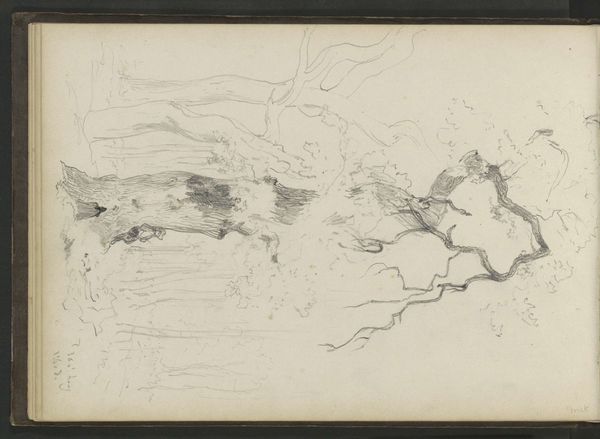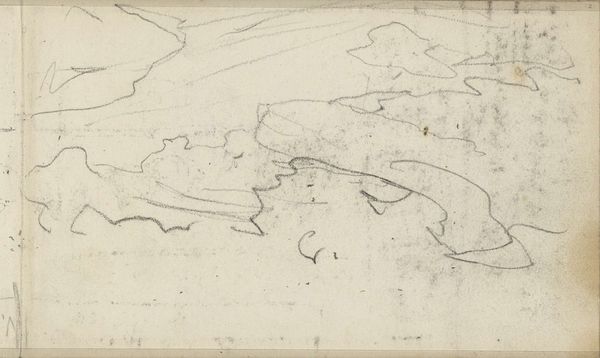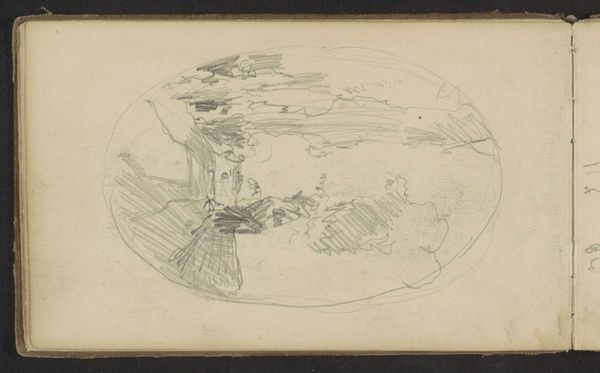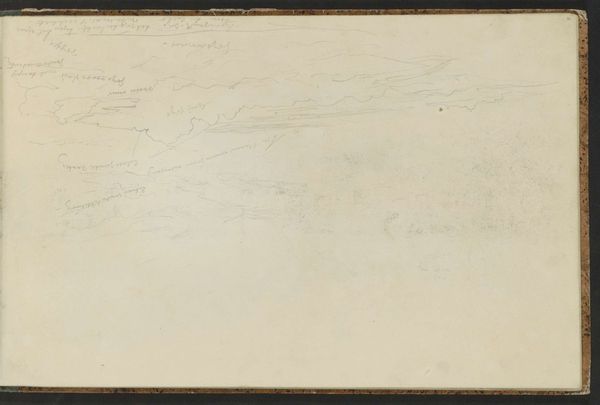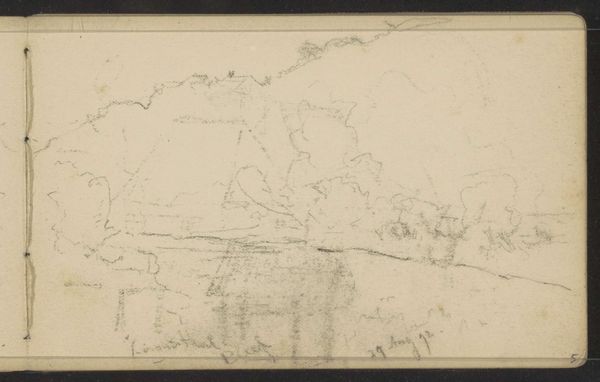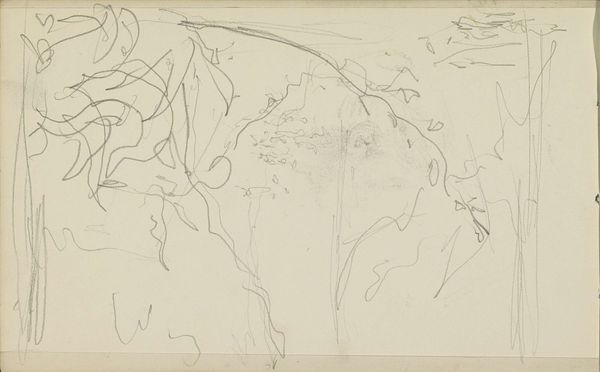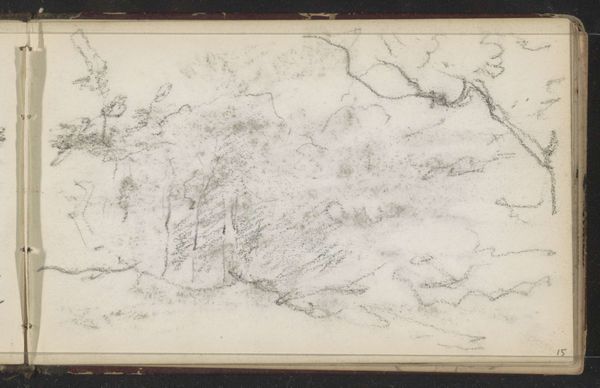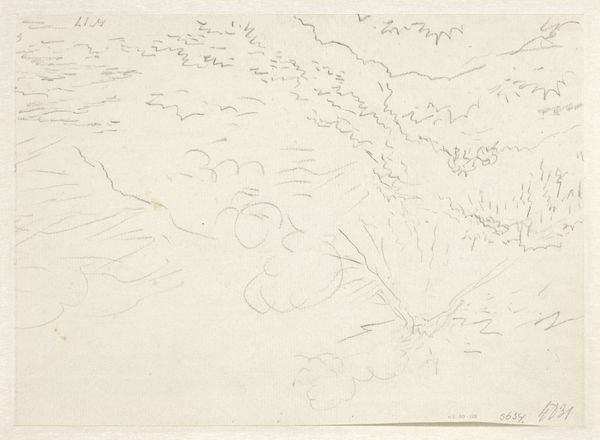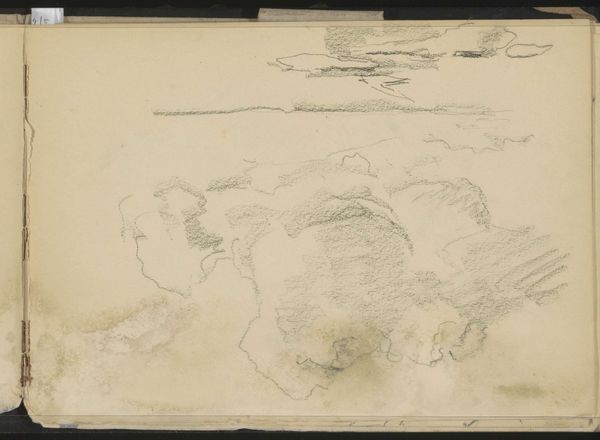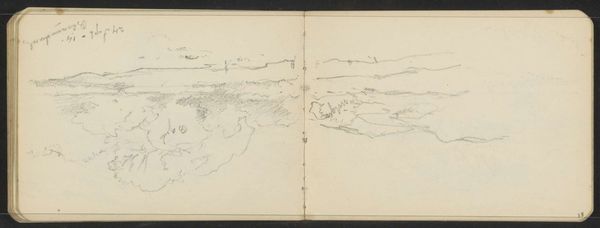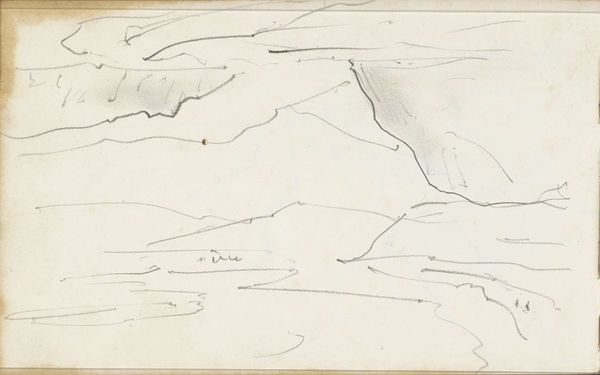
#
aged paper
#
toned paper
#
light pencil work
#
sketch book
#
personal sketchbook
#
ink drawing experimentation
#
sketchbook drawing
#
watercolour illustration
#
sketchbook art
#
watercolor
Dimensions: height 95 mm, width 154 mm
Copyright: Rijks Museum: Open Domain
Editor: Here we have Willem Cornelis Rip’s “Landschap” from 1892, rendered with watercolor and ink on what appears to be aged paper. It's delicate and ephemeral, like a fleeting memory. What draws your eye to this particular sketch? Curator: I’m immediately drawn to the accessibility of this landscape. Consider the labor involved in its production. Rip wasn't creating a monumental oil painting destined for a salon. This is a sketch, born from readily available materials – paper, pencil, maybe some watercolor. The lack of preciousness suggests a different intention, perhaps a direct engagement with the landscape and the sheer act of making, a raw recording of experience rather than a carefully constructed "art" object. Editor: That’s interesting. So you see the materials as being quite important to the purpose of the work? Curator: Absolutely! It bypasses the hierarchy of materials that traditionally elevates painting and sculpture. This challenges those established norms. The immediacy of the sketch reveals a directness absent in more labored, 'finished' works, suggesting a critique, albeit subtle, of conventional art production methods and distribution networks of the period. This suggests a rejection of those conventions, prioritizing direct, personal engagement with the subject matter. How else can we interpret this emphasis? Editor: Perhaps he couldn't afford high-end materials, or perhaps he thought they were superfluous to capture the scene... I hadn't considered how subversive simple materials could be! Curator: Precisely. Its lack of refinement highlights process over product and places it outside the typical commercial structures of art, creating new modes for visual expression by challenging the status quo. Editor: This conversation has truly shifted my perspective; what first seemed like a simple sketch now speaks volumes about art and society in that period!
Comments
No comments
Be the first to comment and join the conversation on the ultimate creative platform.
